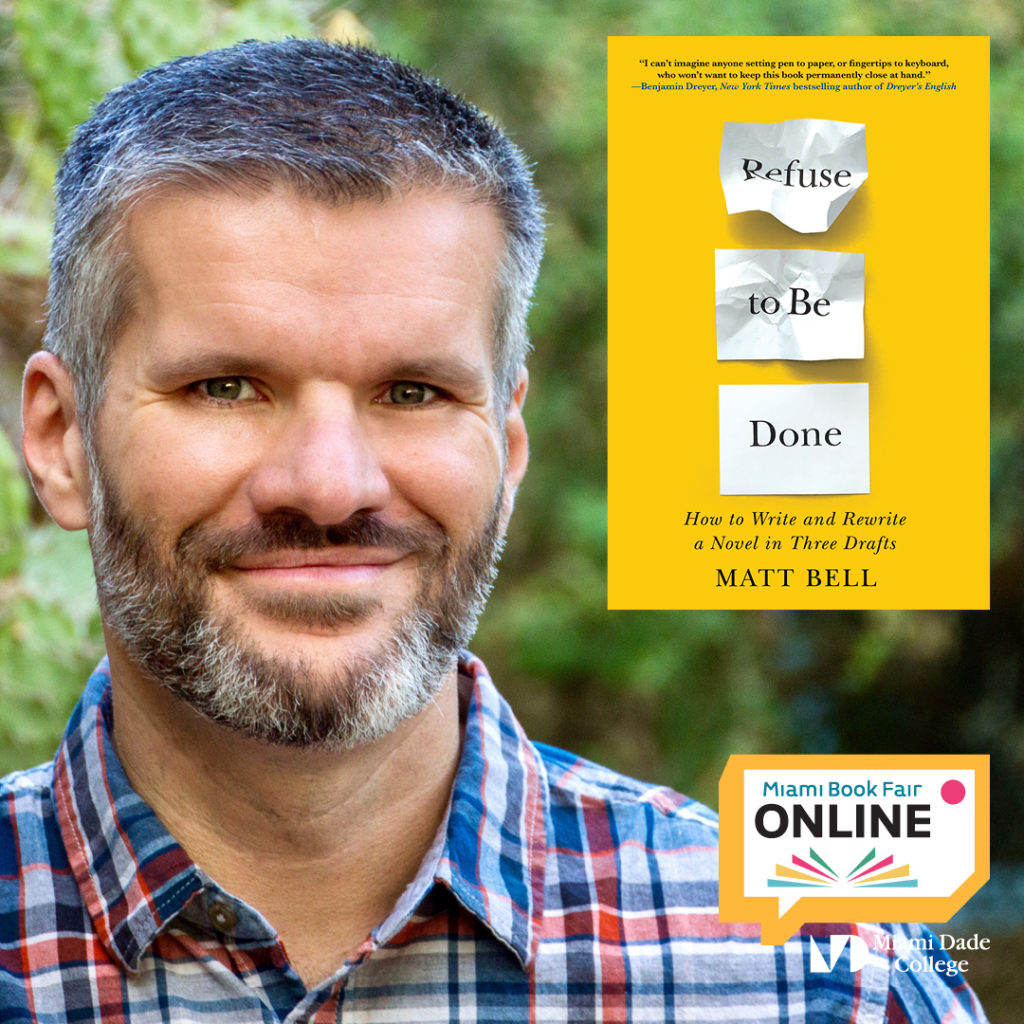Refuse to Be Done: Revisions with Author Matt Bell
For the past few months, I’ve struggled to start a new novel.
With my first idea, I got excited by scientific concept and dove deep into research. When I finally came up for air, I realized I’d wasted a lot of time. My story had a brain but lacked courage and heart.
With my second attempt, I had tons of ideas for action and adventure, which I turned into a detailed outline. But when the satisfaction of laying it all out wore off, I realized I didn’t feel much for my main character, didn’t understand what made him tick.
I never had these problems with my first novel (which is now sitting in a metaphorical trunk), so I worried it meant both new concepts were doomed to an even worse fate.
Enter Matt Bell, author of the novel Appleseed and, more recently, the book Refuse to Be Done: How to Write and Rewrite a Novel in Three Drafts. I received an email that he was offering a class based on his book and I thought, A way out of the woods!
Having recently completed the class, I consider it money well spent and am adding Bell’s Refuse to my list of favorite books on writing. (My top choice is the classic screenwriter’s guide Story, by Robert McKee). In fact, I think Bell’s book is a great counterweight to McKee’s because while McKee is all about planning and plotting before you start writing, Bell’s book recommends the opposite approach, encouraging writers to explore and make mistakes all through the first draft of their novel. In other words, the “problem” with my second novel idea may just be that I didn’t give myself the time and space to write my way into my characters.
Beyond such big-picture insights, Bell’s book has specific editing techniques and thoughtful organizational advice I’m sure I’ll incorporate not only into my novel but also short stories.
Among my favorite take-aways:
- When you get stuck, write three new scenes – one where things get better, one where things get worse and one where things get WEIRD.
- Each scene needs change. Try: a discovery, a complication, a reversal, a resolution or a flipping of the binary.
- If you know a scene isn’t working, retype it from scratch. It’s easy to cut and paste and move words around forever. It’s harder to retype something awful. You’ll improve it as you rewrite.
- Don’t just have people sitting around talking. Have them doing something important/interesting/symbolic while they talk. This ups the action and will help you avoid weak dialogue action that everyone uses too much (nodding, sighing, shrugging, etc.)
- “The reader doesn’t want your logic.” Most writers, as they discover the story for themselves, explain a lot of character motivations. Don’t. The reader wants to make the connections for themselves, which gives them the great “Aha!” moment. Cutting this logic also shortens your story.

